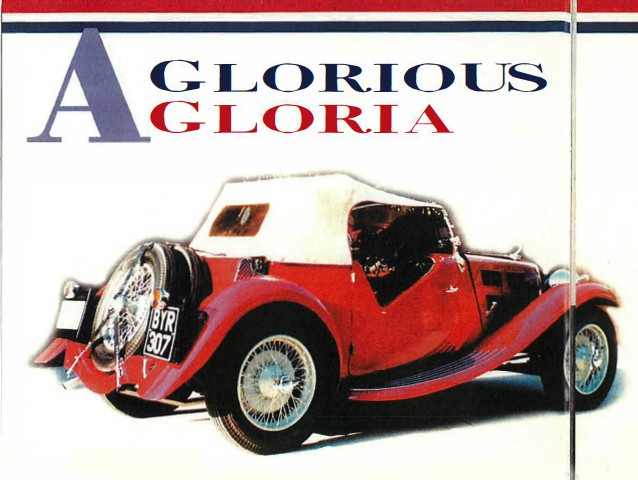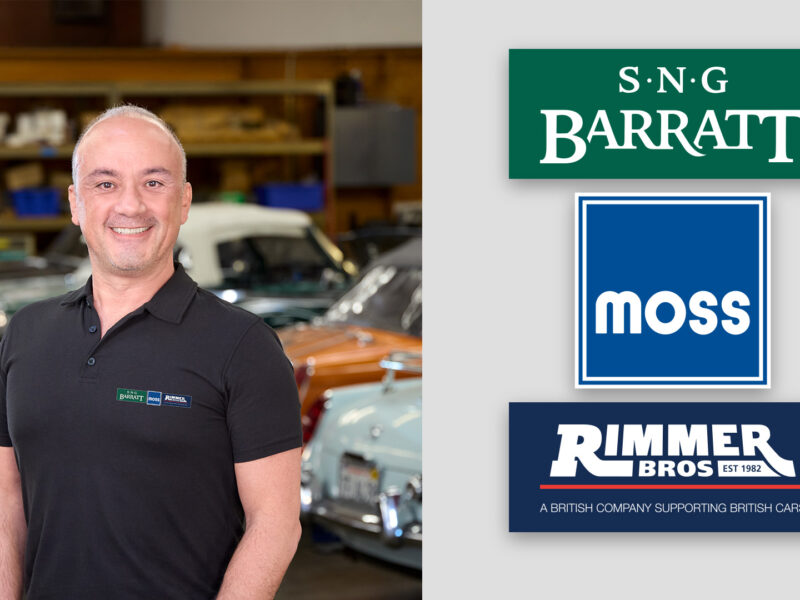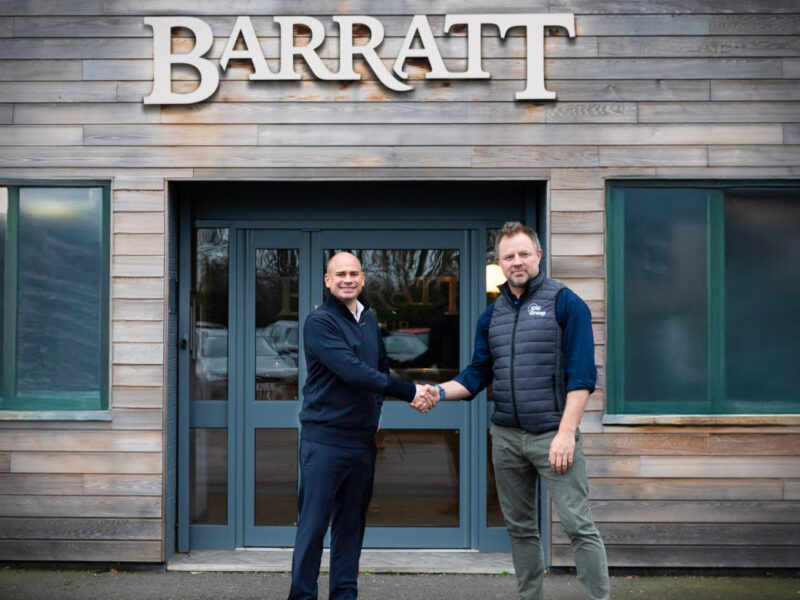By Paul Richardson
It was at the 1997 Vintage Triumph Register convention in Fort Worth, Texas, that I first saw the 1935 Triumph Gloria Southern Cross owned by my old friend Duncan Wood. Duncan, an Englishman working in Texas, bought the car in London in 1996. The Gloria has had only five owners, all of whom Duncan has on record, including Colonel Stokes, the first owner. Colonel Stokes purchased the car new on July 8, 1935 and kept it until 1950. The car also has a fighting history because Colonel Stokes, as was allowed for senior officers in those days, took the car with him on an army posting to North Africa during World War II. The story goes that while traveling to and from a command center in the Gloria, he was fired on by the enemy. It was reported that when the Colonel returned to England, the Gloria carried evidence of a bullet hole somewhere in its body/chassis structure for several years.
I asked Duncan what made him buy the car. He replied, “I’d set my heart on owning a 1930s tourer of some sort and I’ve always been a Triumph enthusiast. As you know, I’ve been living and working in Texas for several years but I found this car when I was working back in England. In my search I’d seen several cars I liked, but the Gloria was in such good condition that I fell in love with it and bought it. I had it shipped to the States.”
The Gloria is indeed a beauty. I was fortunate to see the car at the VTR convention a year after Duncan bought it. I remember Jack Bough, the ex-Lucas racing engineer and senior member of Lucas management in the States for many years, was with me. We couldn’t resist some fun and asked Duncan what sort of MG the car was, which caused some very explicit, yet jovial, directional instructions to be leveled. The car caused an enormous stir at the convention and also took the attention of a local TV film crew.
I asked Duncan why he decided to completely restore the car. It looked in excellent condition when I last saw it. “Well, it was in good condition when I bought it, but I estimated that the car, as it stood, would be awarded about 360 points out of 400 in a concours competition. There were several things that needed putting right to bring the car up to pristine condition. This went in tandem with a longtime ambition of mine to win the best-in-show award at a VTR National Convention with a car I’d prepared myself. I finally decided that, to achieve this with the Gloria, every detail of the car would have to be as near perfect as I could get it, and I spent many hours researching the original specification of the car while taking note of obvious areas that needed attention. I finally decided that to make a real job of it I would have to undertake a full strip-down and ground-up restoration. I was also looking forward to the project as I knew it would be a labor of love and I would enjoy the challenge of restoring a rare, pre-war vintage Triumph for posterity.”
Following up on that comment, I asked Duncan, who served an apprenticeship as a jig and toolmaker and has a degree in engineering, if he had any major problems during the strip-down. “The first thing to realize about taking on a full restoration is the fact that you need plenty of space. I’ve got a three-car garage at home, but by the time I’d stripped the Gloria down, I’d filled it—and I’d also got parts under the bed, in the kitchen cupboards, and in the attic,” he said. “One of the problems I encountered was with the wooden structures inside the sill sections under the doors between the A and B posts. They had rotted and, as these are main structures, I had to replace them. I started off with a piece of ash about three inches square and four feet long. I had to shape the wood by hand to make a perfect fit. The chassis was stripped, sandblasted, etched, and sprayed with chassis black. Parts like the front axle and steering rods were powder-coated. For preservation purposes, I replaced all the original nuts and bolts with stainless steel ones. I was very lucky to have a local supplier for this. I also did most of the bodywork myself. All the panels were stripped to bare metal and repairs made where needed, and a guy I know did the final spray coat and burnishing,” said Duncan.
During the restoration, Duncan reported very few mechanical problems. “The engine was in such good condition that all I did was a complete service and tune up. The cylinder compressions were all within five pounds of each other and the oil pressure was fine. In fact, the engine runs like a bird. I replaced all the bearings, seals, and bushings in the transmission and final drive, and as far as steering and suspension was concerned, I replaced bushes where necessary and brought everything up to perfect condition. I also overhauled the hydraulic brake system.”
The engine in the Gloria is a 1232cc Coventry Climax unit with overhead inlet and side exhaust valves. The engines were built by Triumph under license from Coventry Climax. The carburetion is twin SUs with one mounted in the normal position and the other positioned on top of the engine lying in a horizontal plane, acting as a downdraught unit. The engine delivers 50 bhp at 4700 rpm and the car is capable of a maximum speed of 70 mph with a 0 to 60 time of 28 seconds.
Duncan also decided to completely rewire the car. He related this experience: “You can still obtain the original spec wire, so I stripped all the old wiring out and made up a completely new harness which was a job and a half. Once I’d got all the new wiring fixed neatly to length with new connectors, I took the harness off the car and sent it away to specialists on Rhode Island to get it braided.”
The trim and interior of vintage cars can often create problems. “The trim on the Gloria wasn’t too bad, but the car was re-trimmed about 20 years ago with vinyl. The trim was originally leather and, besides the floors, the backs of the seats were also carpeted, so I decided to strip the vinyl off and bring all the trim back to factory specification,” said Duncan.
“I feel duty-bound to mention the help the Pre-1940 Triumph Club in England gave me with advice on originality. The club was invaluable to the project and I would like to mention Jon Quiney and Ian Harper for their tireless support. They advised me on the original trim specifications for the Gloria and very kindly sent photographs.”
Duncan started his restoration in October 1998 and finished it in April 2001—in time to enter the car for the concours competition at the VTR Convention in Breckenridge, Colorado, last summer.
The 30 months of restoration time allowed the car to be completed to the highest of standards. This was verified as Duncan fulfilled his ambition and won the Concours and Car in Show awards. This was no mean achievement, because there were nearly 280 Triumph entrants at the convention—including the highest number of vintage Triumphs entered at a VTR meet in recent years. Included in the vintage category were another Gloria, a 1929 Super Seven, and three Triumph 1800s, all of which were also superb cars.
This is a truly outstanding effort. Duncan was totally elated with the awards he won and deservedly so. It also goes without saying that the classic car movement as a whole will benefit from this restoration project, as a very rare vintage car has now been restored to pristine condition for all to see. Duncan also informed British Motoring that during his restoration, he found no evidence of any World War II bullet holes anywhere in the car’s panels, etc., or any nine-millimeter bullets rattling about within the chassis structure. So goes another urban legend.











'A Glorious Gloria' has no comments
Be the first to comment this post!